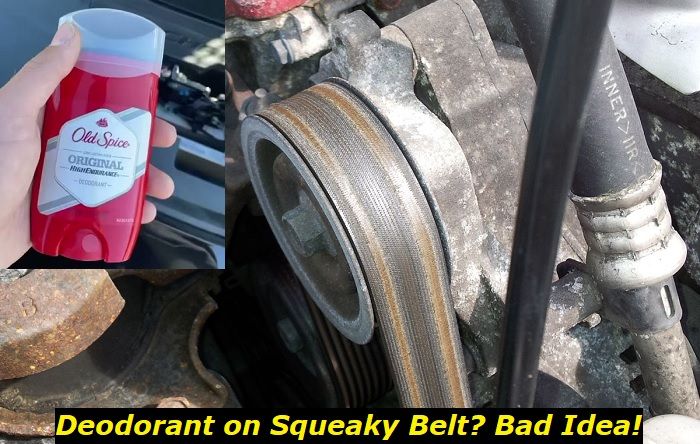Have you noticed your Ford truck idling rough? Maybe the car rumbles and shakes when you're stuck in traffic, or when you're about to switch off the engine after parking. Perhaps the engine peters out and stalls while you're driving. You might wonder if this is just a minor inconvenience, or if your engine needs to be checked. This is a sign of deeper problems with the engine that need to be addressed on time.
Engine idling problems highlights
- Level of urgency:Low
- DIY inspection:Possible but may be complicated
- DIY repair:Sometimes, possible
- Cost of repair:$150 - $600
- Can you drive?Yes
- Commonreasons:IAC valve, throttle position sensor, MAF sensor, carb problems, fuel pressure issues, air supply problems
- Ways to fix:Adjusting the system or replacing the faulty sensor or another part thatis diagnosedto be bad

Causes of Rough Idling and Stalling in the Ford F150
Rough idling and stalling are symptoms of problems with the fuel system, the ignition system, and the air intake. There are several potential causes of rough idle and stalling in your Ford F150.
Despite its reputation as a rugged and reliable vehicle, the Ford F150 is prone to suffering from rough idling and stalling. This is because several parts of the fuel system, ignition system, and air intake are susceptible to developing faults in these vehicles, such as sparkplugs, intake hoses, and fuel injectors.
Some of the most common causes of rough idling and stalling in the Ford F150 include:
1) Engine Misfiring
Engine misfiring is one of the main causes of rough idling and stalling in the Ford F-150. It is caused when there is incomplete combustion in one or more of the cylinders. Severe misfiring can cause the engine to shake and bounce, which you may feel as rough idling. Misfiring can also cause other problems such as reduced fuel efficiency and increased emissions.
2) Faulty spark plugs or ignition coils
Sparkplugs are the engine components that are responsible for providing the spark that ignites the fuel in the engine. If they are not functioning properly, fuel might not be burnt in some of the cylinders, resulting in misfiring that can cause rough idling and stalling.
3) Failed Mass Airflow Sensor
The mass air flow sensor is responsible for measuring the amount of air flowing into the engine. This is important because it tells the engine control unit (ECU) how much fuel the fuel injectors should deliver to the engine.
If the mass airflow sensor is not functioning properly, the fuel injectors will deliver either too much or too little fuel. When the engine receives the wrong amount of fuel, it can cause issues like rough idling, stalling, and decreased fuel efficiency.
4) Dirty or Clogged Fuel Injectors
The fuel injectors are responsible for delivering fuel to the engine. The fuel passes through the nozzle, which is very small and clogs easily if any dirt is present in the fuel.
If the fuel injectors are dirty or clogged, they may not be able to deliver enough fuel to the engine. This can lead to poor performance in the engine, as well as rough idling and stalling.
5) Vacuum Leaks
The air intake system in your car uses a vacuum to pull air into the engine through the throttle body. When the car has a vacuum leak, air bypasses the throttle body to enter the engine. This causes the engine to take in more oxygen than needed, resulting in a lean fuel mixture. This lean fuel mixture causes misfiring in the cylinders, which can result in rough idling.
6) Damaged or Clogged Fuel Pump
The fuel pump is responsible for delivering fuel to the engine. If it is weak or damaged, it may not be able to deliver enough fuel to the cylinders, leading to rough idle and stalling.
How to Diagnose the Problem
When your Ford F150 is rough idling and stalling often, diagnosing the problem can be a bit tricky. This is because the problem can originate from three different systems in the car.
Identifying the system that is responsible for the problem requires some observation and some trial and error. You can make it easier by using a Diagnostic Trouble Code (DTC) scanner. However, if you don't receive any codes, you can use these symptoms to identify the source of the problem.
1) Fuel System
When there is a problem with the fuel system, then your engine is likely to run lean. This means that there is not enough fuel reaching the engine, because of a failed component, or a clog somewhere in the fuel system.
If the problem is originating from the fuel system, then you are likely to notice the following problems.
- Reduced performance
- Stalling
- Hard starting
- Check Engine Light
2) Ignition System
If the problem is originating from the ignition system, you might notice the following symptoms.
- Loud, rattling engine
- Reduced power
- Increased emissions
3) Intake System
When the problem is originating from the intake system, you are likely to notice some of these symptoms.
- Hissing noise
- Idling at high RPMs
How to Fix the Problem
Once you have identified the source of the problem, you can examine the system to see what sort of damage you're dealing with and whether the problem part needs to be cleaned, repaired, or replaced. Keep reading to find out what to look for and how to solve the problem you might be having.
- Check the Sparkplugs
Remove the sparkplugs and examine them for signs of dirt and damage. If the sparkplugs are dirty or covered in carbon residue, this will affect their ability to produce a spark. You can clean the sparkplugs with spray-on plug cleaner and a wire brush. However, it is usually better to replace the sparkplug, because a cleaned sparkplug will not be as efficient as a new one.
If the sparkplug is damaged or broken, then it will need to be replaced. When replacing sparkplugs, make sure that they are matched. Mismatched sparkplugs have a risk of misfiring. This is why it is recommended that you replace all of your sparkplugs at once.
- Check for Clogged or Dirty Fuel Injectors
If you suspect clogged fuel filters, you can try to treat them by adding some fuel injector cleaner to your tank. If this doesn't work, then you have a serious blockage that requires the fuel injectors to be removed and cleaned.
If any of the fuel injectors is completely blocked, then it will most likely need to be replaced.
- Check for Clogs in the Fuel Filter
The fuel filter removes solid contaminants from the fuel. As it does its job, dirt and debris begin to build up on it. With enough time, the fuel filter will become fully clogged and prevent fuel from getting past it, forming a blockage in the fuel system.
If your fuel filter is clogged, it can be cleaned out. However, it is recommended that you replace it if it is extremely dirty. An excessively dirty fuel filter is susceptible to damage and failure that can allow dirt to pass through and clog other components in the fuel system. If your fuel filter is damaged, then you will need to replace it.
- Check for Vacuum Leaks
Searching for vacuum leaks is a simple procedure that doesn't require much technical knowledge. You can start by opening the engine compartment and listening for a hissing noise when the engine is running. Inspect the air hoses and air intakes for any cracks and leaks. You can do this by squeezing the hoses with your hands and examining for any hoses that feel like they are dry or cracking.
Any small leaks that you find can be replaced using silicone sealant. However, once a hose has started cracking or leaking, more leaks are soon to follow, so this is only good for a temporary solution. You can replace any damaged hoses that you find for a long-lasting solution.
- Check the Mass Airflow Sensor
The mass airflow sensor is located on the intake manifold of the Ford F150. Once you have removed it, you can clean it with some mass airflow sensor cleaner.
If it doesn't work after being cleaned, then the problem may be a faulty sensor. If this is the case, then you will need to have the sensor replaced. Make sure to check the part number of the sensor to order the correct one.
Conclusion
Despite its reputation for being a tough, dependable vehicle, the Ford F150 is predisposed to developing problems in the fuel, ignition, and air intake systems that result in rough idling and stalling.
It is important to properly diagnose and address these issues to prevent further damage to the vehicle and ensure safe operation. Regular maintenance and timely repairs can help prevent rough idling and stalling in your Ford F150, as well as the host of other problems that come with these issues.
About the authors
The CarAraC research team is composed of seasoned auto mechanics and automotive industry professionals, including individuals with advanced degrees and certifications in their field. Our team members boast prestigious credentials, reflecting their extensive knowledge and skills. These qualifications include: IMI: Institute of the Motor Industry, ASE-Certified Master Automobile Technicians; Coventry University, Graduate of MA in Automotive Journalism; Politecnico di Torino, Italy, MS Automotive Engineering; Ss. Cyril and Methodius University in Skopje, Mechanical University in Skopje; TOC Automotive College; DHA Suffa University, Department of Mechanical Engineering






Add comment